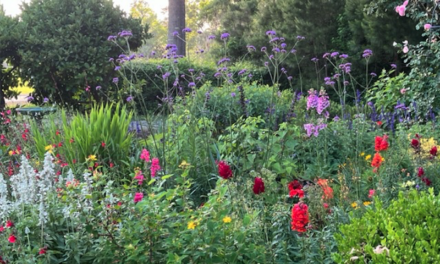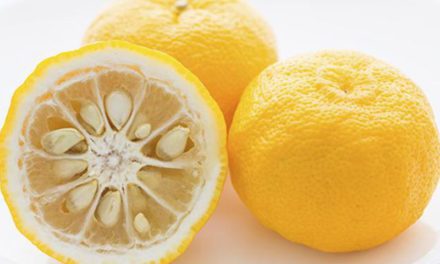When we plant a garden planning is paramount. Where to put the posies and when to plant what? There are all kinds of gardening axioms that may be followed.
• Plant in odd numbers, small things in front, use complementary colors, and give perennials space to fill in.
• I would also like to add that pretty is as pretty does. Plants can be beautiful and do something too.Since I’m a plant nerd they are all beautiful to me. I am blown out of my gardening clogs by the beauty and wonders of nature. My nose will be pollen-yellow after smelling the roses and sticking my face into a flower to observe the color or patterns on petals. I am also guilty of eating the flowers. All parts of a day lily are edible. The flowers of pansies, nasturtiums and some marigolds are sweet, peppery or herbal. Rose hips are an excellent source of vitamin C; the Rugosa group has prominent orangey hips. Herbs like the mints, thyme, and oregano fragrant, edible, and “walkable”. Some of my favorite herbs also double as border plants: curly parsley, globe basil, calendula, and chives. For container planting the rule is mass planting- fill the pots with good compost or potting soil and pack them with fillers, thrillers, and spillers.
Ornamental and dramatic plants can be tasty and good for you and me; they come in variety of colors like red mustard, white and purple kale; Swiss chard is lovely in red, yellow, and green. I am impressed by how many shades of green that nature affords us. Plants may be red-green, yellow-green, blue-green, purple-green, and so on. Even green may be light pale or white or dark almost to black. These shades and colors appeal to our sense of design and interesting combinations of plants are available at your favorite garden center. Artists like Monet used color as a theme for garden design. His monochromatic gardens are quite wonderfully maintained at his home and nearby gardens in Giverney. There we see purple, white, yellow, red orange, and blue grouped in beds. Bronze fennel and purple sage may be growing with lavender and lavender cosmos. Another tool of designing with color is using complimentary colors together in a planting composition. We do it instinctively sometimes, because the colors look good together. Red and Green are stunning together. Hollies and asparagus have red berries. Red amaryllis growing out of a bed of asparagus ferns is my good color combination memory. Blues and yellows are also complementary colors as are purple and orange.
The garden or flower bed needs to be sited in a sunny location for most vegetables and herbs to do well. The soil should be tested for the pH and availability of nutrients necessary for healthy plants. It is important to be successful gardeners and is an inexpensive way to take some of the guesswork out of horticulture. Our soils in the Lowcountry may be acidic which is great for Azaleas and Camellias, but not so great for many garden plants. One notable exception is blueberries. These can be great as edible landscape plants. Blueberries blooms in late winter with little white bell shaped flowers, the foliage is a lovely grey-blue-green, and after harvesting the berries in the summer, the leaves will turn a nice red/gold in the fall. They enjoy an acidic soil, which can be accomplished by using leaves and pine needles as mulch and adding compost generously to the shrubs. A neutral pH is going to be better for herbs, perennials, and most vegetables. Composting and recycling are the two things that we can do on our own properties that can make an exponential difference to the planet. By feeding the soil, we are going to have healthier plants that are more resistant to insects and disease. Healthier plants are going to bloom and produce better than ones struggling in poor soil.
In closing let me suggest that there are so many plants that are pretty – good for the soul if not the digestive system. Preparing the soil is an act of faith and duty. Gardening is a metaphor of life. Sometimes we give and sometimes we get. Some days are sunny and warm and some are cold and rainy. When we garden we get in touch. We don’t grow plants. We don’t feed plants. Plants make their own food from water and sunlight, CO2 and a molecule of Magnesium and Nitrogen called chlorophyll. Plants feed us. Everything we eat comes directly or indirectly from a plant. I am humbled by the beauty of a lettuce leaf and a pea pod. I am so thankful when I see the bees and butterflies come to my flowers. We are so privileged to live in a place we can garden most of the year. I put on my gardening shoes to lose the blues.
Read more How Does Your Garden Grow?









